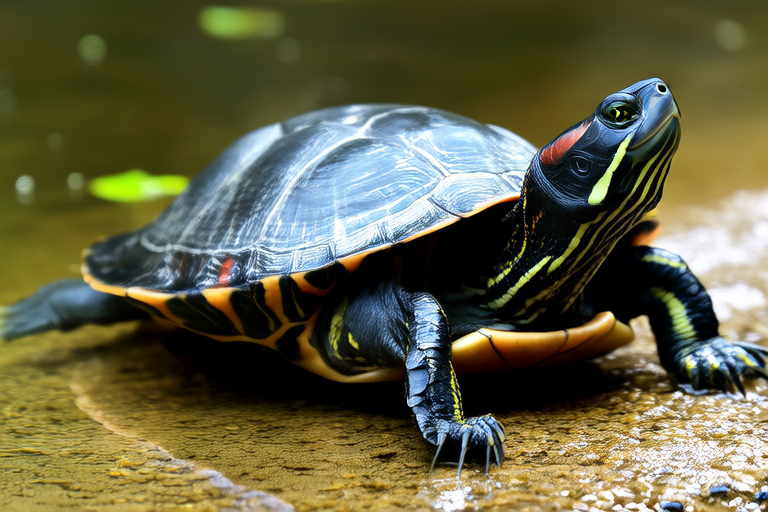Top Secrets to Keeping Your Red-Eared Slider Happy and Healthy
Red-eared sliders (Trachemys scripta elegans) are one of the most popular turtle species kept as pets. Their vibrant appearance and relatively low maintenance make them attractive to many. However, owning a red-eared slider requires more than just providing food and water; it involves creating an environment that supports their physical and psychological well-being. This guide delves into the top secrets to keeping your red-eared slider happy and healthy, offering essential tips on diet, habitat setup, water quality, basking needs, and regular health check-ups.
Understanding Red-Eared Slider Behavior
Before diving into specific care instructions, it’s crucial to understand your pet’s behavior. Red-eared sliders are semi-aquatic turtles, meaning they spend part of their time in water and part out of it. They are generally solitary creatures but can be social when interacting with humans or other turtles. Understanding their natural behavior helps you provide the right environment and care.
Proper Diet: The Key to a Healthy Turtle
Feeding your red-eared slider a balanced diet is vital for its overall health. A good diet includes a mix of commercial pellets, fresh vegetables, and occasional protein sources like insects or fish. Young sliders require more protein than adults, who need a higher proportion of vegetation. Ensure that any food offered is appropriate for their size and age.
Variety is key in maintaining a healthy diet. Introduce different types of vegetables such as leafy greens, carrots, and squash. Avoid feeding them iceberg lettuce, which has little nutritional value. Protein sources should be limited to prevent obesity. Feed your turtle only as much as it can consume in 10-15 minutes to avoid overeating.
Suitable Habitat Setup: Creating a Comfortable Home
A well-designed habitat ensures your red-eared slider thrives. The tank should have enough space for swimming and basking. For a single adult, aim for at least 40 gallons of water, increasing the size if you plan to house multiple turtles. Provide a basking area using a secure platform that allows the turtle to completely dry off.
The substrate at the bottom of the tank should be safe for ingestion, such as large gravel or smooth pebbles. Avoid small, sharp particles that could cause injury. Equip the tank with UVB lighting and a heat lamp to mimic natural sunlight. UVB light is essential for calcium absorption and preventing metabolic bone disease.
Water Quality Maintenance: Keeping It Clean
Poor water quality can lead to health issues for your red-eared slider. Regular water changes and filtration are necessary to maintain cleanliness. Change about 30% of the water weekly, more frequently if the tank is overcrowded or poorly filtered. Use a high-quality filter designed for turtle habitats.
Monitor water parameters regularly using test kits. Maintain pH levels between 6.5 and 8.0, and ammonia and nitrite levels at zero. Chlorine and chloramine must be removed from tap water before adding it to the tank. Consider using a dechlorinator specifically formulated for reptile tanks.
Basking Requirements: Essential for Health
Basking is crucial for red-eared sliders as it aids in digestion and helps regulate body temperature. Ensure there is a dedicated basking spot equipped with a UVB lamp and a heat source. The basking area should reach temperatures around 90°F (32°C). Provide a ramp or gentle slope from the water to the basking platform to encourage usage.
Position the UVB lamp so it covers the entire basking area. Replace the bulb every six months or according to the manufacturer’s recommendations. Lack of sufficient UVB exposure can result in shell deformities and weakened immune systems.
Regular Health Check-Ups: Preventing Problems Early
Scheduling routine veterinary visits is an important aspect of turtle care. Annual check-ups allow veterinarians to catch potential health issues early. During these visits, they may perform blood tests, X-rays, or other diagnostic procedures.
At home, monitor your turtle’s appetite, activity level, and overall appearance. Any significant changes in behavior or physical condition should prompt a visit to the vet. Keep a log of any symptoms or concerns to share with the veterinarian.
Mental Stimulation: Enhancing Your Turtle’s Life
In addition to physical care, providing mental stimulation is crucial for your red-eared slider’s happiness. Enrichment activities can include hiding food in various parts of the tank, introducing floating toys, or rearranging decorations periodically. These activities stimulate curiosity and engagement, mimicking natural behaviors.
Spending time interacting with your turtle also contributes to its mental well-being. Handle your turtle gently but regularly to build trust. Be cautious not to stress the animal during interactions.
Conclusion: Commitment to Care
Owning a red-eared slider is a rewarding experience, but it comes with responsibilities. By understanding their dietary needs, setting up a suitable habitat, maintaining clean water, ensuring adequate basking, scheduling regular health checks, and providing mental stimulation, you can ensure your turtle lives a long, healthy, and happy life. Remember, each turtle is unique, so tailor your approach based on individual needs and preferences.
With dedication and knowledge, you can create an environment where your red-eared slider thrives, bringing joy and companionship to your home for years to come.
